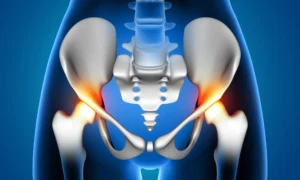Introduction:
Back pain is a common condition that affects millions of people worldwide, and its impact on daily life can be debilitating. While there are various causes of back pain, including injuries, poor posture, and sedentary lifestyles, regular exercise has been proven to play a crucial role in both preventing and alleviating back pain. This essay will explore the significance of regular exercise in maintaining a healthy back, focusing on the benefits of exercise, specific exercises that promote back health, and the role of exercise in preventing and managing back pain.
Body:
1. The Benefits of Exercise for Back Health:
Regular exercise offers numerous benefits that contribute to the overall health of the back. These benefits include: a. Strengthening the back muscles: Engaging in exercises that target the back muscles, such as the erector spinae, multifidus, and latissimus dorsi, can help increase their strength and endurance. Strong back muscles provide better support for the spine, reducing the risk of strain and injury. b. Improving flexibility and range of motion: Exercises that promote flexibility, such as stretching and yoga, help maintain proper spinal alignment and prevent muscle imbalances. Increased flexibility also enhances the ability to perform daily activities with reduced stress on the back. c. Promoting good posture: Regular exercise contributes to better posture by strengthening the core muscles, including the abdominal and pelvic floor muscles. Improved posture ensures proper spinal alignment, reducing the risk of back pain caused by poor posture. d. Enhancing circulation and nutrient supply: Exercise stimulates blood flow, delivering essential nutrients and oxygen to the spinal tissues. Improved circulation aids in the healing process and reduces inflammation, which can contribute to back pain.
2. Exercises for Back Health:
Core-strengthening exercises: Core exercises such as planks, bridges, and bird dogs target the abdominal, back, and pelvic muscles, providing stability and support to the spine. b. Stretching exercises: Incorporating stretching exercises into a fitness routine, such as cat-camel stretches, can improve flexibility and alleviate muscle tension in the back. c. Aerobic exercises: Engaging in low-impact aerobic activities like swimming, walking, or cycling promotes cardiovascular health and weight management, which are essential for reducing back pain.
3. Preventing and Managing Back Pain through Exercise:
Preventive measures: Regular exercise can prevent back pain by strengthening the back muscles, improving posture, and maintaining a healthy weight. Additionally, exercise helps manage stress, which can contribute to muscle tension and back pain. b. Rehabilitation and pain management: For individuals already experiencing back pain, specific exercises can aid in rehabilitation and pain management. Physical therapy programs often include exercises tailored to an individual’s condition, targeting muscle imbalances, and improving mobility. c. Low-impact activities: When back pain is present, low-impact exercises such as swimming and water aerobics can be beneficial, as they reduce pressure on the spine while still providing a cardiovascular workout.
Give focus
Pain O Soma 500 is a medication that is commonly prescribed for the relief of back pain. It contains the active ingredient carisoprodol, which belongs to a class of drugs known as muscle relaxants. Carisoprodol works by blocking pain sensations between the nerves and the brain, helping to relax the muscles and reduce muscle spasms. This mechanism of action provides relief from the discomfort associated with back pain.
The recommended dosage of Pain O Soma 500mg is usually taken three times a day, orally, with or without food. It is important to follow the prescribed dosage and duration as advised by a healthcare professional. Pain O Soma 500mg can be beneficial for individuals experiencing acute back pain, particularly when accompanied by muscle spasms. It helps to alleviate pain, improve mobility, and promote relaxation in the affected area.
However, it is essential to note that Pain O Soma 500mg may cause drowsiness, dizziness, or impair cognitive function. Therefore, it is advised not to operate heavy machinery or engage in activities that require alertness until the individual understands how the medication affects them.
You can also use Prosoma 500
Additionally, Pain O Soma 500mg should not be used for prolonged periods without medical supervision, as it has the potential for dependence and abuse. It is important to follow the prescribed treatment plan and consult a healthcare professional regarding any concerns or side effects.
Conclusion:
Regular exercise plays a vital role in preventing and alleviating back pain. By strengthening the back muscles, improving flexibility, promoting good posture, and enhancing circulation, exercise contributes to a healthier and pain-free back. Engaging in exercises specifically designed for back health, along with incorporating aerobic activities and stretching routines, can prevent the onset of back pain and aid in its management.
It is essential to consult with healthcare professionals or physical therapists to develop an exercise regimen tailored to individual needs and conditions. Embracing a regular exercise routine not only supports a healthy back but also contributes to overall well-being and quality of life.
Visit site:- https://timesofrising.com/







































